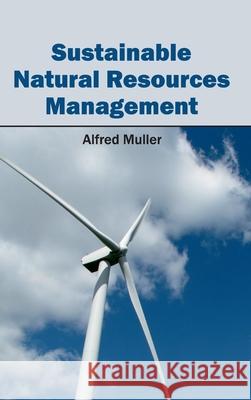Sustainable Natural Resources Management » książka
Sustainable Natural Resources Management
ISBN-13: 9781632395856 / Angielski / Twarda / 2015 / 178 str.
This book brings forth important issues in conservation of natural resources which has come to acquire a position of major concern in both developed and developing countries. However, it is a matter of particular significance for the latter, since majority of their population relies upon terrestrial ecosystems for livelihood. More than one billion people live in poverty, earning less than a dollar per day and more than 3.7 billion suffer from chronic hunger. Population increase, resource use conflicts, technological advancements, climate change, political doldrums, and unsustainable use and harvesting of resources have all put an increased burden on natural resources causing land degradation and poverty. To accomplish a win-win situation, we need to advance our mindset by considering alternative modes of thought through favoring integrated and holistic approaches in managing our natural resources. This book brings forth a range of sustainable strategies and approaches consisting of use of GIS and Remote Sensing technologies, decision support system models, involvement of stakeholders in primary decisions about consumption of natural resources, community level initiatives, and use of surveillance and monitoring mechanisms.
This book brings forth important issues in conservation of natural resources which has come to acquire a position of major concern in both developed and developing countries. However, it is a matter of particular significance for the latter, since majority of their population relies upon terrestrial ecosystems for livelihood. More than one billion people live in poverty, earning less than a dollar per day and more than 3.7 billion suffer from chronic hunger. Population increase, resource use conflicts, technological advancements, climate change, political doldrums, and unsustainable use and harvesting of resources have all put an increased burden on natural resources causing land degradation and poverty. To accomplish a win-win situation, we need to advance our mindset by considering alternative modes of thought through favoring integrated and holistic approaches in managing our natural resources. This book brings forth a range of sustainable strategies and approaches consisting of use of GIS and Remote Sensing technologies, decision support system models, involvement of stakeholders in primary decisions about consumption of natural resources, community level initiatives, and use of surveillance and monitoring mechanisms.











